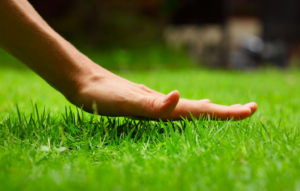Green burials are becoming more popular with the increasing desire for eco-friendly options to reduce carbon footprint and eliminate hazardous chemicals from entering the ground. Each step of the death care process can limit waste and provide nourishment for the local ecosystem. Many mortuaries offer green burial options in place of conventional burial practices that involve embalmment, concrete vaults, and burial containers.
What Is It?
A green burial places emphasis on environmental sustainability and simplicity. It often means the body is no longer cremated or prepared with chemicals like embalming fluids.
Burial can be simple and involve wrapping the deceased in a cotton shroud and lowering them into the ground. They can be more complicated and include a memorial ceremony and the planting of flowers and shrubs on the grave.
Necessity of Embalming
Embalming refers to the preservation of remains through the use of chemical treatments. The mixture can delay decomposition and allow a body to look more natural for public display. However, this has become more a cosmetic process than a public health safeguard. Embalming is not a necessary step for a cremation or a burial service.
Green burials eliminate the need for embalming altogether. Dry ice or other nontoxic agents can be used to preserve the body instead.
What Are Its Advantages?
According to the National Funeral Directors Association in 2017, about 54% of Americans considered a green burial option as a way to reduce the environmental impact of traditional burials. The other attractive features of green burials are their reduced cost and the lasting legacy they provide.
Cost
 Burial costs vary from cemetery to cemetery. Hybrid cemeteries offering both green and conventional burials can provide a balanced perspective on their financial costs in relation to each other. They found that graves intended for both types of burial cost about the same. However, with the additional costs of vaults, coffins, and embalming for traditional burials, green ones become the less costly option.
Burial costs vary from cemetery to cemetery. Hybrid cemeteries offering both green and conventional burials can provide a balanced perspective on their financial costs in relation to each other. They found that graves intended for both types of burial cost about the same. However, with the additional costs of vaults, coffins, and embalming for traditional burials, green ones become the less costly option.
Environmental Impact
Conventional burial involves putting embalming chemicals and non-biodegradable materials like steel and cement into the earth. Cremation does away with these chemicals but leaves behind a massive carbon footprint. Green burials, on the other hand, do not include the use of hazardous chemicals. They eliminate the need for resources like hardwood, steel, and concrete.
Legacy
Green burials can also speak to the person. An individual may find it comforting to think that their body returns to nature upon death. A conservation burial is one where fees cover the protection, restoration, and management of land. Burial sites can preserve a natural landscape and offer refuge for wildlife. As such, conservation-intensive green cemeteries contribute to the creation and conservation of native habitats. For individuals who choose green burials, the protected land they are buried on becomes a legacy left for future generations.
Green burials may be seeing a rise in popularity for their simplicity, reduced cost, and ability to minimize environmental impact and damage. More education should be provided on these environmentally friendly practices to further reduce damage to natural resources.





